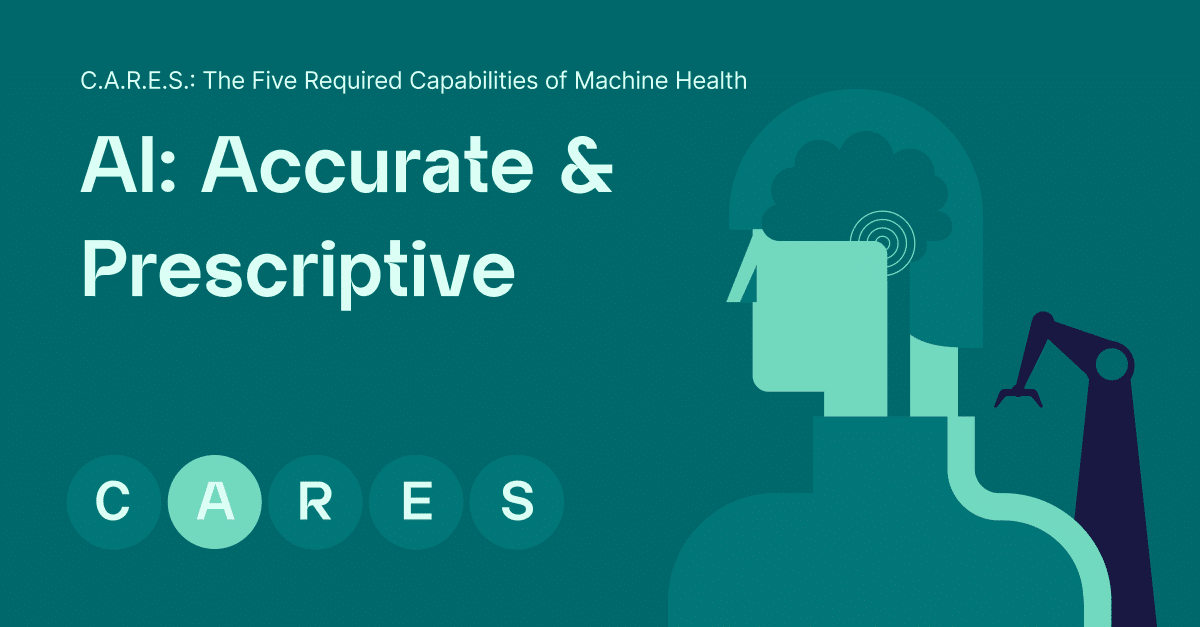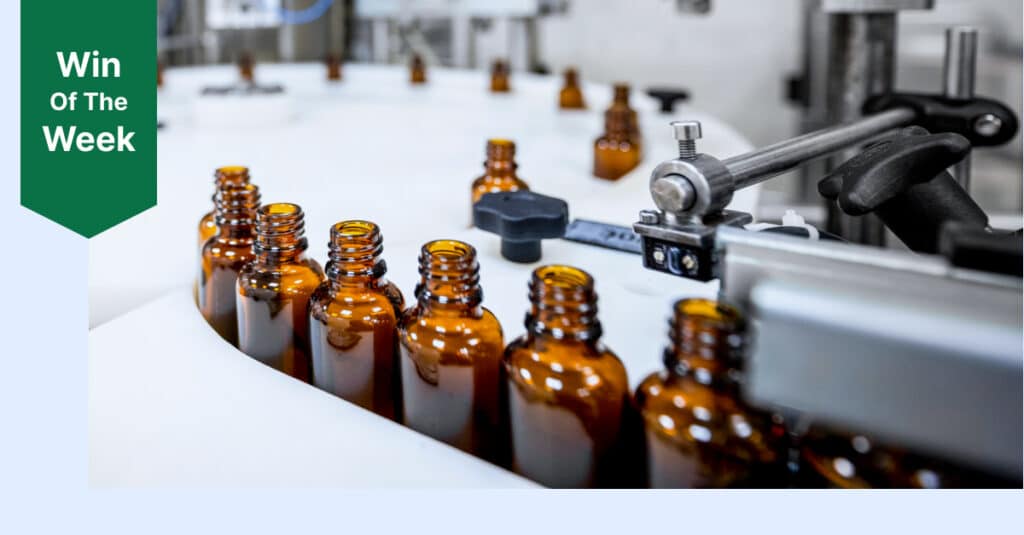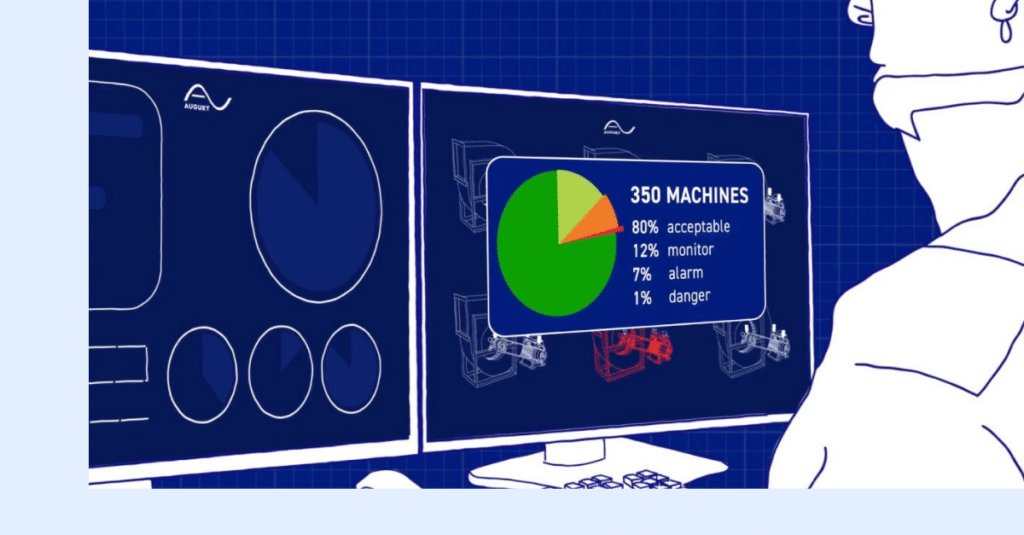
For a successful Machine Health solution, you need 5 capabilities – as broken down in the acronym C.A.R.E.S. Each in themselves is a great step forward. But the real – and measurable – value is in how they interact and build on each other. In other words, you’re missing opportunities if you can’t leverage all 5. For part 2 of this blog series, we put a spotlight on the “A” – Accurate Prescriptive AI – and how this fits in the big Machine Health picture.
As we saw in the previous post, AI is fundamental in achieving Comprehensive Asset Coverage. But AI technologies can also jumpstart your longer-term goals. Certainly, in the case of machine health, AI-driven prescriptive maintenance can work to not only drastically improve day-to-day productivity, but it also makes larger goals, such as scaling and digital transformation, possible.
Fixing Problems, Not Looking For Them
“Machine health is a completely different methodology than the traditional route-based approach. It’s nothing like periodic data collection, where a human will walk up with an analyzer and collect the data machine-by-machine,” says Ryan Delaney, the Manager of Reliability Success Team at Augury.
C.A.R.E.S.: The Five Required Capabilities of Machine Health
C: Comprehensive Asset Coverage
A: AI: Accurate & Prescriptive
R: Reach At Global Scale|
E: Engagement & Autonomy
S: Services End-To-End
“Hopefully, this will all change very soon but there’s still too many monitoring service companies doing it in this manual way – not to mention manufacturers following the same approach in-house. You should have an IoT monitoring system that never sleeps or gets sick collecting the data. And actually that’s also not enough: you also need AI doing the anomaly detection and diagnostics. Then your reliability engineers can focus on taking the actionable insights and fixing the problems – not spending all their time looking for the problems. Only in this way will you be able to scale,” says Ryan
“The problem is either you are looking for a needle in a haystack, over-maintaining your machines, or rushing to put out a fire that came out of nowhere. Think about it in terms of job satisfaction alone. Wouldn’t you actually just prefer to fix stuff that needs to be fixed?”
Why is Accurate Prescriptive AI so important?
Machine health solutions fail because they miss diagnostics, create too much noise, and do not provide enough direction to be useful. The result is alarm fatigue, asset damage, excessive maintenance, unplanned downtime and ultimately failure of the program.
False Alerts Are the Enemy Of All That Is Good
One of the most frustrating aspects of a route-based reliability job is the level of false alerts, and this is also the case with continuous monitoring using thresholds. “Having far less alerts is the overall advantage of having AI algorithms,” observes Christian Smith, the Manager for Reliability Operations at Augury. “I’ve seen teams dealing with 9,000 alerts a month suddenly seeing that drop to 12. Let me tell you, that has a profound effect on the quality of your working day.”
“At the same time, you are collecting an enormous amount of data. With 24/7 collection of magnetic, temperature, and triaxial vibration data, you get roughly 14,400 data sets per month on an average continuously-running machine. The algorithms will weed through the vast majority, triggering a detection only about once per month per machine. Then the human expert, a vibration analyst, can filter it further and pass maybe 20% of those to the customer’s reliability team – really just leaving the meaningful alerts,” says Christian.
“So, this makes for a profound shift. You don’t have to manually collect data and you can sit back and wait for the algorithm to tell you when and where to look.. You have all the benefits of having a lot of data – but you don’t have to sift through it yourself. Plus, you can see exactly when changes occurred. Maybe a guy was welding nearby and wasn’t properly grounded so it arced through a bearing. You now have time to figure that stuff out and make sure it doesn’t happen again,” says Christian.
“I think it’s a good idea to again emphasize the ‘Accurate’ in Accurate Prescriptive AI,” adds James Newman, Head of Product and Portfolio Marketing at Augury. “You need to be assured that it doesn’t miss an alert at least 99.9% of the time.”
Accurate AI Is What Makes Hybrid Intelligence Possible
Even the best AI is only as smart as its training: context matters. In manufacturing to make it work, you do need humans in the loop – preferably engaged ones. You need them to do the actual hands-on fixing. You need them to complete the loop in terms of marking the wins and providing the feedback to make the AI ever-more robust.
“And perhaps most importantly, you need humans to act as machine health missionaries – inspiring colleagues on the effectiveness of the program – whereby Impact At Global Scale becomes possible,” says James.
Yes, Go For Higher-Level Work. But Also Go To Scale.
“You definitely need the proper AI for proper scaling anyway,” adds Christian. “There’s far less setup time compared to a threshold- or route-based system. You don’t have to spend time tuning thresholds machine-by-machine. One algorithm works for them all. Tomorrow we can get on a new type of machine and they’re going to run with the same accuracy.”
“In theory you may be able to reach a similar sort of accuracy without AI if you have experienced in-house VAs. But you will need an army of them since this will take a mind-boggling amount of work to get there.”
The Only Way To Scale: Bigger Is Literally Better
“But if you can’t do that for every single site, no matter where they are in the world, you’re still wasting your time,” says James. “AI doesn’t just drive User Engagement & Autonomy but also the ultimate goal: Digital Transformation. And meanwhile the AI only gets better and more robust with scale. It’s literally a situation of the bigger, the better.”
“In terms of applying AI to specific manufacturing use cases, we’ve come a long way,” Assaf Barak, VP AI & Physics at Augury. “Machine health has already proven its value. And the more data we gather from assets, the deeper patterns can be unearthed by the AI so we can cover assets even more efficiently. And this will continue as we work to loop in more data and further data sets. Remember: we are in the early days of AI in the manufacturing world and we already are already seeing the huge value being delivered to our customers. This is just the beginning, and from here the sky’s the limit.
Thank you for reading the ‘5 Machine Health Capabilities and Their Interactions’ series. It’s a big one :).
Reach out if you want to learn more about how these work with Augury’s machine health solution. And if you missed any installments, here are the other four parts:
1) Comprehensive Asset Coverage
3) Reach at Global Scale
4) Engagement & Autonomy
5) Services End-to-End




